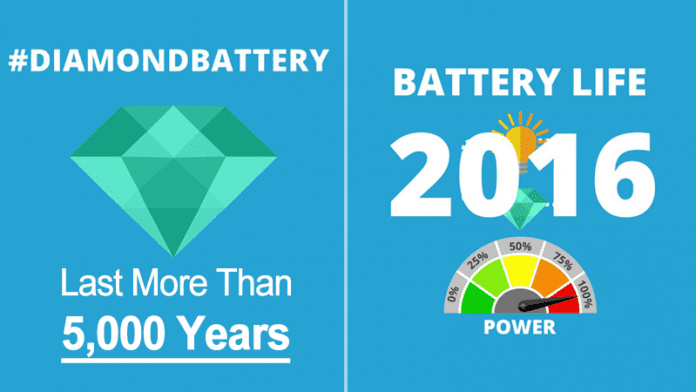Now you can use nuclear waste for generating power, the significant thing, on top of the fact that you don’t need to find somewhere to store it, is it doesn’t generate carbon dioxide so it would be great for the environment.
These Diamond Batteries Could Last More Than 5,000 Years
What if I say you that you can now generate power from the waste materials? Yes, now you can use nuclear waste for generating power, the significant thing, on top of the fact that you don’t need to find somewhere to store it, is it doesn’t generate carbon dioxide so it would be great for the environment.
A team of scientists from the University of Bristol proposes a revolutionary response. They have found a way to turn this waste into clean batteries which also last for thousands of years.
The British team did not work directly on batteries, but on ways to recycle the fuel of the oldest nuclear plants in the UK. The Magnox reactors of these plants use graphite to keep under control the nuclear fission.
The process converts the material into a radioactive isotope, carbon-14. Britain has more than 100,000 tons of radioactive carbon does not know how to recycle. The radiation emitted by the material just have the outdoor range, but still is not something that can be buried in the first hole of the English countryside they find.
The solution Bristol group has been taking advantage of a very particular quality of industrial diamonds. When these stones receive radiation generate a small electric current. Researchers have split the carbon-14 graphite rods and used it to make a radioactive diamond.
Striking the crystal lattice of molecules that form the diamond, beta particles 14 Carbon generate electrons. To isolate the radioactivity, radioactive diamond has been coated with a second layer of normal diamond which perfectly insulates the radiation and generates more electricity above.
The result is a stone that emits electricity without moving parts and does not pollute. Despite its low power relative to current batteries, this new technology could reduce problems with nuclear waste and the generation of clean electricity.
As if this were not enough, its duration is directly related to the speed at which the radioactive isotope decays within. Researchers estimate that after 5730 years the would be still at 50% load. Hence, The life of these batteries could revolutionize devices that require power for long time scales, from satellites to high-altitude aircraft or even spaceships.
The bad news is that the current generated by the prototype created in Bristol is not very intense, but could revolutionize sectors with needs of small voltage and which can not or is difficult to change the batteries as medical devices (pacemakers) or space probes. The University of Bristol has requested more ideas for these batteries in social networks using the “#diamondbatteries” label.



